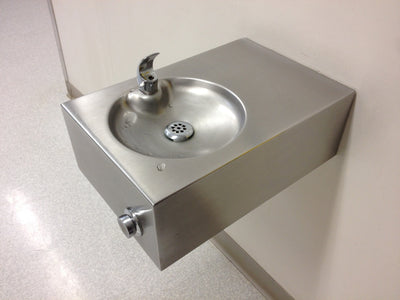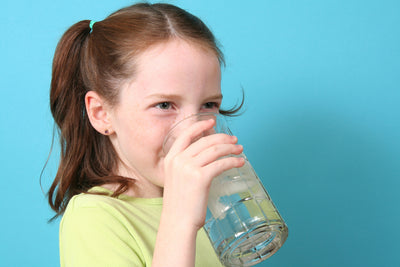Water Quality InformationWritten By Actual Experts
RSSProblems We Found In San José , California Drinking Water

Does New York City's Tap Water Have a Lead Problem?

Why Do So Many Schools Have Lead in the Drinking Water?

Eric Roy, Ph.D. | Scientific Founder
With schools in major cities across the country testing positive for lead contamination (e.g. New York City, Cleveland, Chicago, Portland, Newark, San Francisco), we get lots of questions about what’s happening. The goal of this article is to shed some light on why lead in school drinking water is such an important thing.
There is no level of lead that is known to be safe for children. Period.
Since lead contamination in tap water entered the spotlight in 2015, people have incorrectly presented EPA's regulatory limits as safe/not safe thresholds. While a simple safe/unsafe threshold would certainly make things more simple, the 15 ppb threshold was never intended to be a "safe level." It’s a limit that EPA established to evaluate city-wide corrosion control practices and it allows a city to have up to 10% of samples test ABOVE the 15 ppb threshold, and still be in compliance with the Lead and Copper Rule. For reference, the American Academy of Pediatrics is calling for regulatory changes that ensure that water never tests above 1 ppb in schools.
Most Schools Are Old & Old Plumbing Often Contains Lead
According to data assembled by the U.S. Department of Education, the average age of a Public School building in the United States is 44 years old, a time when lead-based plumbing was the norm. Even in newer schools, lead contamination can creep into water because lead wasn’t completely phased out of plumbing connections, fittings, and valves until 2014.
Weekends & Summers Allow Water To Sit Stagnant For Extended Periods Of Time In Schools
As many now realize, lead accumulates in water when it leaches from lead-containing pipes, valves, and plumbing connections. The longer water sits stagnant in pipes, the more lead it can accumulate. Unlike in homes, where water is used on a daily basis and never sits stagnant for more than a few hours each night, water in schools goes completely unused for long periods of time each weekend, vacation, and summer. These frequent long periods where water is not used are detrimental for two reasons:
- Lead has more time to accumulate as water sits stagnant in lead-containing pipes
- The lack of flushing prevents corrosion measures from rebuilding the protective layer that prevents lead from leaching out in the first place.
Most Schools Do Not Test Water Properly For Lead Contamination
It sounds crazy, but most schools don’t test for lead contamination in water. When asked by a reporter about testing the school’s water for lead, an elementary school superintendent went on record to say that "We do not test because it has never been brought up as a concern, nor is it a requirement to do so."
The reality is, even if schools choose to test for lead contamination, it’s much more complicated than testing in a residential home. In a residential home, EPA sampling protocols require that water be unused for 6 hours, in order to simulate the night and work day periods where water commonly sits stagnant in pipes. However, this protocol does not mimic how water is used in schools, because in addition to the 12 hours each school night the water goes unused, it sits stagnant for roughly 60 hours each weekend, and much longer periods over school vacations and summer.
How Can Schools Reduce Lead Contamination In Drinking Water?
Realistically, it’s probably cost-prohibitive for schools to replace all lead-containing plumbing or buy and maintain effective point of use drinking water filters that remove lead. When school administrators approach us for solutions, we always advise them to take immediate steps to identify lead containing plumbing, test their water for lead, and to implement regular pipe flushing protocols.
We encourage everyone to call their city's school department to better understand if and how lead is being tested for in schools. Because testing in schools is very complicated, we encourage people to ask for specifics of the testing program and actual results, not blanket assurances that everything is ok.
What Can I Do About Lead In Schools?
While replacements to lead service lines are taking place in many cities across the country, improvements to the water supply won’t happen overnight. Here are 4 things you can do in the meantime to help keep your school children safe from lead-contaminated water in the school buildings:
-
Check your Filters. If you are packing water for your child, please check to make sure you are using a filter that is certified for lead removal.
-
Get informed. Ask school administrators whether the drinking water in your child’s school has been tested for lead and ask to see the results. Information on lead in drinking water, testing methods, and steps you can take to minimize exposure is available from the Safe Drinking Water Hotline or on the EPA’s page: Basic Information about Lead in Drinking Water.
-
Be an Advocate. Encourage your school or district to install water dispensers or drinking fountains that use filters certified for lead removal.
-
Spread the word. Talk to your child’s pediatrician, school nurse, teacher, and your school’s parent-teacher association about lead in the drinking water in schools. Inform them that the American Academy of Pediatrics recommends 1 ppb to be a safe level of lead in drinking water.
Originally published on January 28, 2017. Updated August 17, 2022.
Related Articles:
Does New York City Tap Water Have A Lead Contamination Problem?
The Noah System: Lead-Free Drinking Water for America’s Schools
The American Jobs Plan to Allocate $111 Billion To Water Infrastructure Improvements
How Does Lead Enter Drinking Water?






